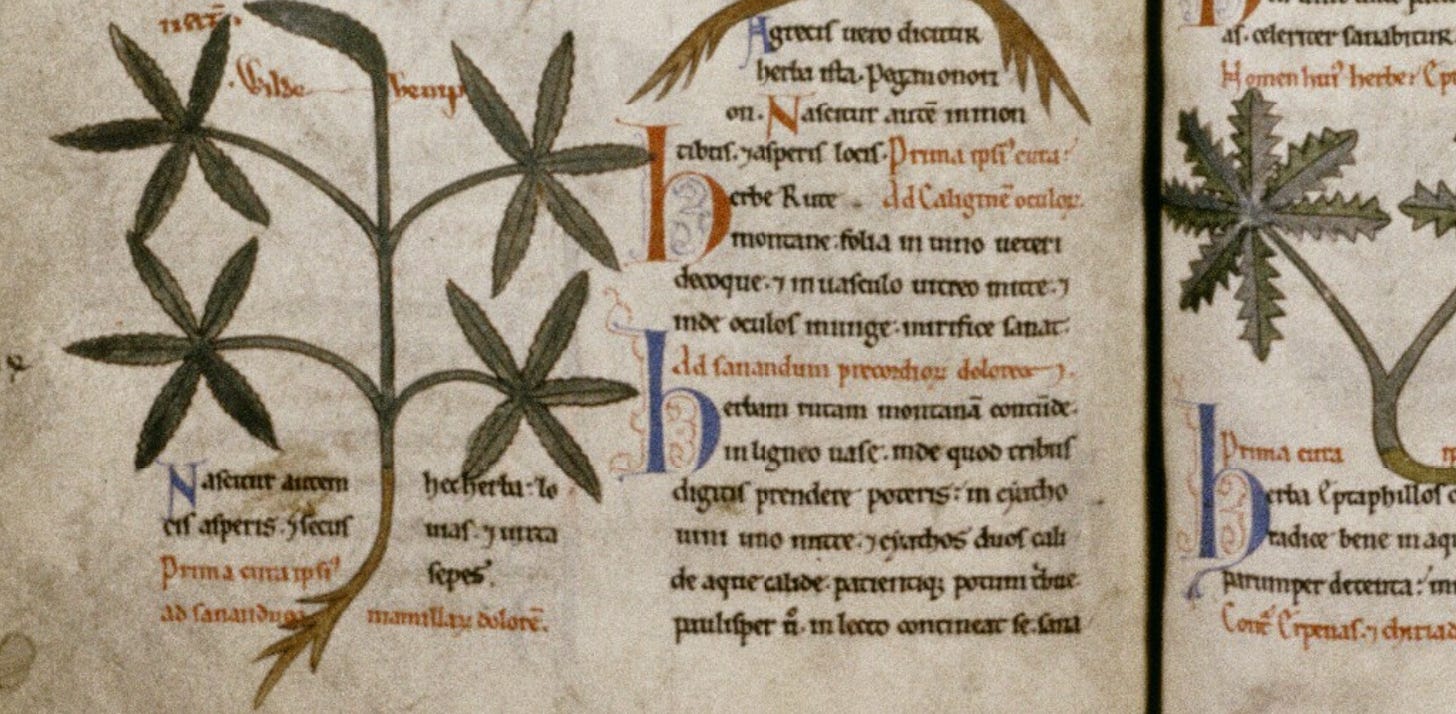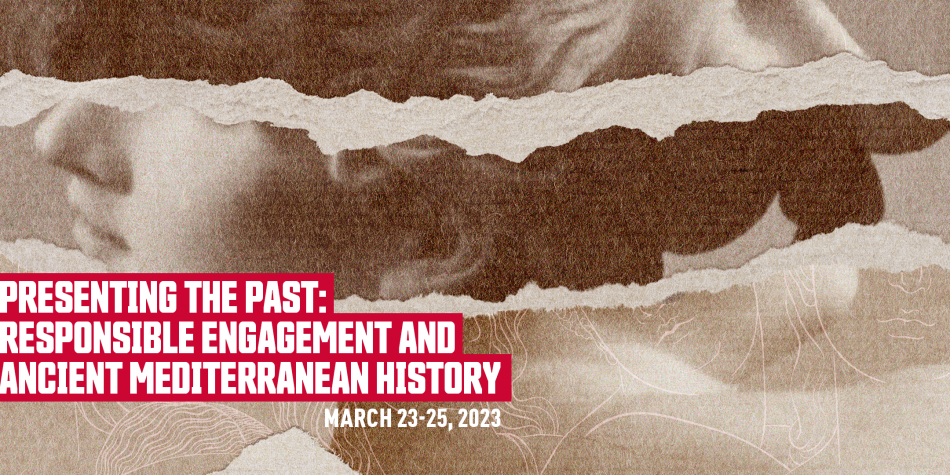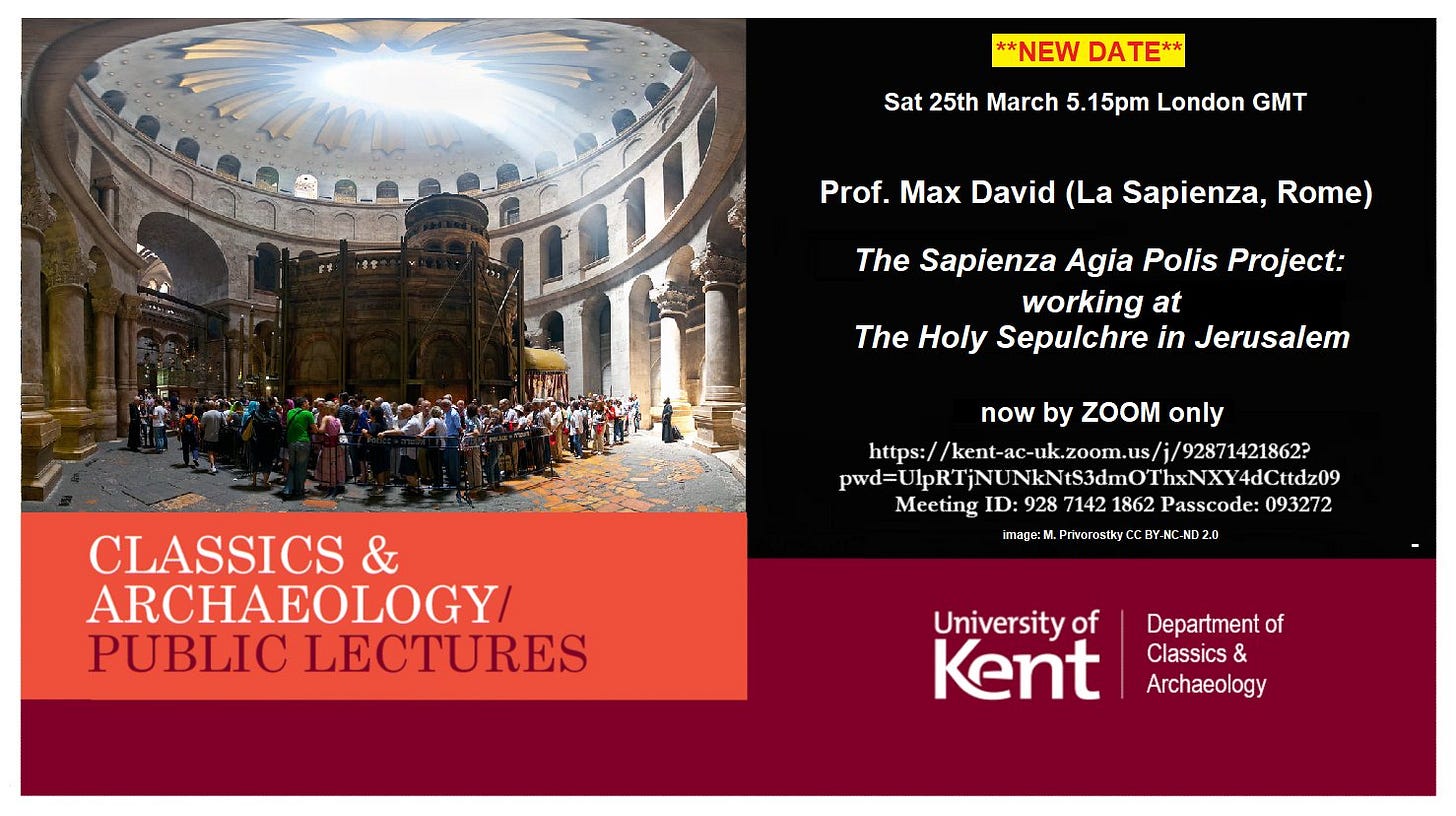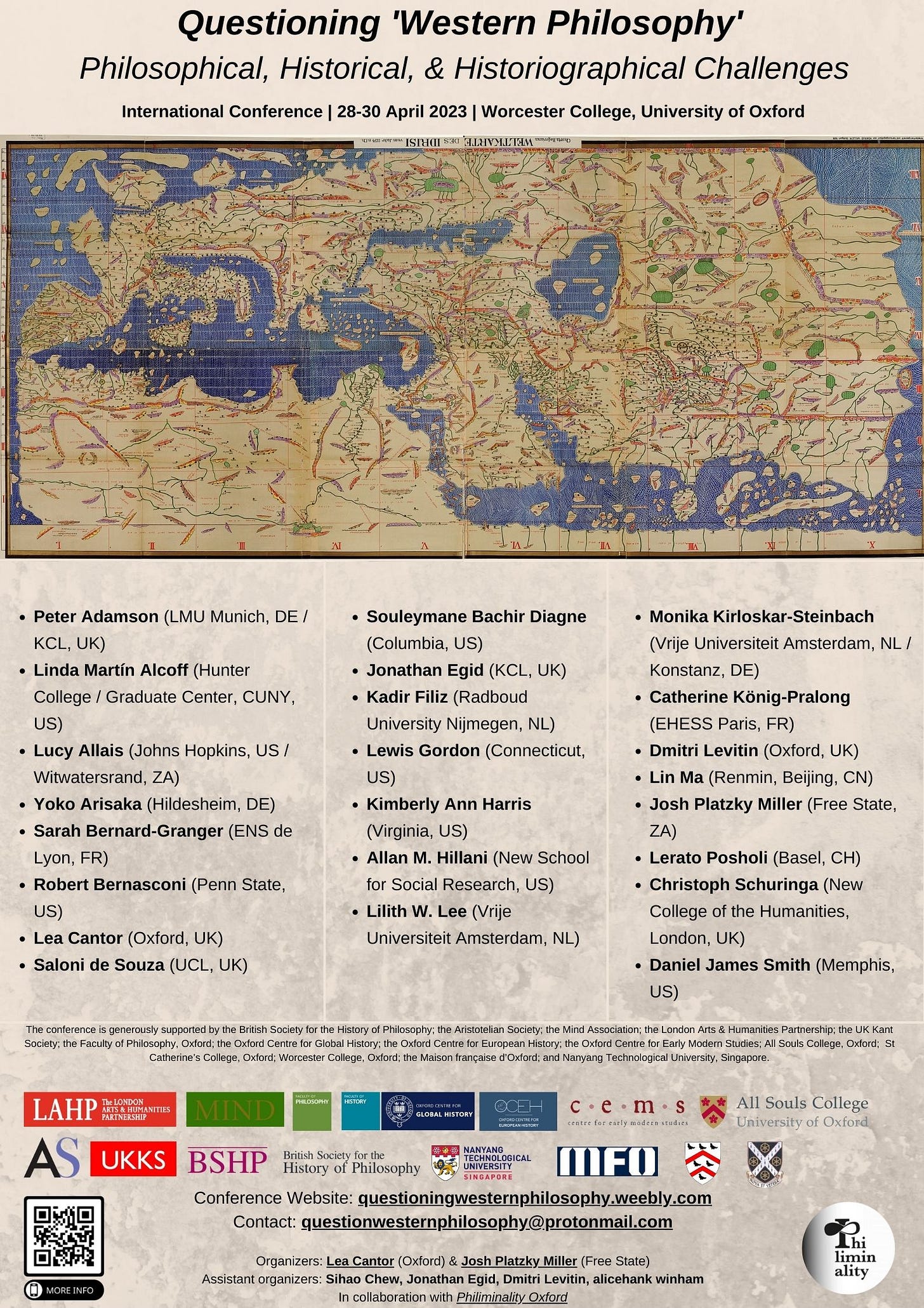Pasts Imperfect (3.23.23)
Ancient & Medieval Cannabis 🥦 , Digital Egyptology, Roman Landscapes, and More

This week, we look at cannabis and other psychoactive substances in the Greco-Roman world and along the Silk Roads. Then, a new open access book on digital humanities in Egyptology, water management at Great Zimbabwe, a new exhibition on the art of Roman landscapes, the history of Nowruz, new ancient world journals, and more.
Cannabis & Constructs of Ancient Sobriety by Sarah E. Bond
Since at least 1910 within American culture, there have been taboos and then prohibitions surrounding cannabis products. However, recent increases in legalized marijuana usage in the United States have begun to dissipate many of these modern inhibitions. The national dialogue has also had a profound impact on the number of students, podcast hosts, and journalists inquiring about the use of marijuana and other psychoactive plants in antiquity, such as opium or “magic” mushrooms. Such interest has also spurred more academic inquiry into its long history of use. Now, as archaeologists, archaeobotanists, and ancient historians apply new scientific approaches to material culture, the recovery of ancient residues have allowed greater access and insight into a range of psychoactive plants in antiquity. In the process, it has encouraged us to revise our notions of the ancient world.
Cannabis was a multi-use plant used for things like hemp rope or shoes, as well as for recreational, medicinal, and ritual purposes. Its cultivation may go back as many as 12,000 years, to the Neolithic Period. Some of the oldest macroremains of cannabis have only been uncovered recently in Northwest China (800-400 BCE). Additionally, a new study found cannabinoids on 8th century BCE altars at Tel Arad in Israel. The plant was known to Greek writers such as Herodotus, an author who connected it to the Scythians in the 5th century BCE. But where can readers even begin to explore this Mediterranean usage? When students or colleagues, often in hushed tones, ask me about the subject, I am delighted to point them to Alan Sumler’s accessible and enjoyable Cannabis in the Ancient Greek and Roman World. Sumler focuses on the Greek and Roman Mediterranean, with shorter detours into medicinal and recreational cannabis usage among the Egyptians, Scythians, Hittites, and those trading along the Silk Roads.
A large section of Sumler’s slim monograph provides translated primary sources of Greco-Roman authors such as Dioscorides, Galen, and Dio Chrysostom addressing cannabis products and beliefs. The research also goes beyond simply reconstructing how and why cannabis was used by Greeks and Romans. In his introduction, Sumler argues that his study takes aim at the widespread belief that moderation and sobriety were the norm in the Greco-Roman world:
This false assumption of a sober ancient world, dominated by moderation, threatens to cover up the everyday reality each ancient faced and how they coped with it. Ancient Greek and Roman socialization taught moderation as an important virtue. What happened in real life may have been a different story.
As Sumler and many other authors have pointed out: philosophical ideals don’t always translate into lived experience. New chemical and archaeobotanical analyses of resins and residues absorbed by ancient ceramics done by Patrick McGovern, Meng Ren, and Vanessa Linares (among many others) are increasingly pointing to an ancient world that did more than dabble in psychoactive substances. Many could be smoked directly or ingested through beverages. Because of ambiguous language (e.g. “seeds” or “leaves”) in Greek and Latin descriptions, many mind-altering substances in literary sources were previously unknown (e.g. Circe’s psychoactive κυκεών in the Odyssey) or assumed to be references to fermented beverages. But now these archaeochemical studies allow texts to be revisited in new ways.
Modern chemical analyses reviewed alongside the literary evidence has led to novel understandings of everything from how Romans treated intestinal parasites to the medieval Egyptian ingestion of cannabis cakes for dessert. As Sumler suggests, in hindsight, the much more recent prohibition of cannabis may one day be viewed “as a fluke, a failed experiment” when situated in its much longer history of multifaceted use.
Eran Arie, Baruch Rosen, and Dvory Namdar, “Cannabis and Frankincense at the Judahite Shrine of Arad,” Journal of the Institute of Archaeology of Tel Aviv University 40.1 (2020): 5-28.
Zuzana Chovanec, “Intoxication on the Wine Dark Sea: Investigating psychoactive substances in the Mediterranean Basin,” in Ancient Psychoactive Societies, ed. by Scott Fitzpatrick (University Press of Florida, 2018), 43-70.
Paul Gootenberg (ed.), The Oxford Handbook of Global Drug History (Oxford University Press, 2022). Nota: Part I is on Ancient Drug Worlds in Asia, Africa, Europe, and the Americas.
Vanessa Linares, Eriola Jakoel, Ron Be’eri, et al. “Opium trade and use during the Late Bronze Age: Organic residue analysis of ceramic vessels from the burials of Tel Yehud, Israel,” Archaeometry (July 2022).
Meng Ren, Zihua Tang, Xinhua Wu, et al., “The Origins of Cannabis Smoking: Chemical residue evidence from the first millennium BCE in the Pamirs,” Science Advances 5.6 (2019): 1-8.
Alan Sumler, Cannabis in the Ancient Greek and Roman World (Lexington Books, 2018).

Public Humanities and a Global Antiquity
A new, open access volume, Ancient Egypt, New Technology: The Present and Future of Computer Visualization, Virtual Reality and Other Digital Humanities in Egyptology, edited by Rita Lucarelli, Joshua A. Roberson, and Steve Vinson, is now available online.
This volume of collected studies takes stock of most recent developments in Egyptology and the Digital Humanities, considering future directions for the application of new technologies in Egyptology. The book presents the results of an international conference held in 2019 at Indiana University – Bloomington, in which Egyptologists and digital humanists with interest in Egyptology gathered in 2019 to present current projects in 3D modeling, virtual and augmented reality, game technology, digital pedagogy, database projects, computational and corpus linguistics and E-publications. Those projects, along with a selection of others that were not presented in Bloomington, are now described and discussed in this volume.
Of particular interest is Willeke Wendrich’s chapter on “Ethics of Digital Representation in Egyptology” and Julia Troche and Weston’s chapter on “Virtual Reality Storytelling: Pedagogy and Applications.” What the book makes clear is that digital humanities are strong within the field of Egyptology.

In other Egyptology news, Lucarelli was also behind the recent “The Past into the Future: Afrofuturism and Ancient Egypt” conference held last week at UC-Berkeley. Author Ytasha Womack has been on the forefront of the Afrofuturism movement for many years, and spoke at the conference—which was also integrated with the work of artist Doran Dada. By all accounts, it looks like it will one day be a stellar edited volume for those who missed being there in person.


A new study of the dhaka pits at Great Zimbabwe (near Lake Mutirikwi, Zimbabwe) uncovers a vast and complex water management system for the 11th century urban center that cities today facing water crises might learn from. As the authors note, “this study shows the potential of integrating remote sensing, geoarchaeological and ethnographic approaches to examine historical and indigenous water systems to inform climate-smart water management systems.”
From now until May 21, 2023 at the San Antonio Museum of Art (SAMA), Roman Landscapes: Visions of Nature and Myth from Rome and Pompeii, is on view. It is the first exhibition in the United States to explore the depiction of landscapes as its own, emerging genre within Roman art. As they note: “The exhibition features sixty-five wall paintings, sculptures, mosaics, and cameo glass and silver vessels created in Roman Italy between 100 BC and AD 250.” If you can’t get to San Antonio, you might also enjoy the “Gardens of the Roman Empire” Project launched a few years back.

Over at the Perseus Project, Gregory Crane and his team have announced a Beta version of Perseus 6.0: “Beyond Translation — the first version of a next generation Perseus.” With everything from an annotated Beowulf to the poetry of Hafez, Perseus 6.0 promises new reading environments and a welcome space for linked open data to be presented, visualized, and then reused.
At the Friends of ASOR blog, economist and classicist Jörg Mull asks: “What Can Mythological Narratives tell us about Mycenaean Long-Distance Trade in the Bronze Age?” In order to address the participation of Mycenaean Greeks in the long-distance commercial trade particularly in metals during the Bronze Age, Mull takes a few pages from his recent book, Towards the Borders of the Bronze Age and Beyond. He then demonstrates how mythological heritage—from Odysseus to Bellerophon—might help us recover new clues as to Mycenaean engagement in trade. He concludes that a “holistic view of Mycenaean overseas contacts” that includes myths can collectively indicate “clear evidence of Mycenaean long-distance travel and exploration contained within the corpus of Greek myths, with a focus towards the metal supply centers of the age in Sardinia, southern Iberia, and the Black Sea area.” A great argument for why we can never fully separate archaeological evidence from myth.

From Monday to Tuesday afternoon of this week was the celebration of Nowruz—the Persian New Year. Over at the UCI School of Humanities blog, Touraj Daryaee, director of UCI’s Samuel M. Jordan Center for Persian Studies and Culture and Maseeh Chair in Persian Studies and Culture, discusses the long history of the holiday as connected to the epic The Shahnameh or Book of Kings and many earlier traditions. He then traces its celebration into the medieval world and the modern day.
Additionally, Ramadan began on Wednesday, Mar 22, 2023 and will last until April 20. Ramadan Mubarak!
New Antiquity Journal Issues (by @YaleClassicsLib)
Hermes Vol. 151, No.1 (2023) NB James L. Zainaldin, The Agricultural Preface between Rome and China: The Virtues of Farming in Columella and Jia Sixie”
Analecta Bollandiana Vol. 140, No 2 (2022)
Bibliotheca Orientalis Vol. 79, No. 3-4 (2022)
Manuscript and Text Cultures (MTC) Vol. 2 No. 1 (2023) #OpenAccess Navigating complex texts from pre-modern cultures in the digital age
Digital Applications in Archaeology and Cultural Heritage Vol. 28 (2023)
Romanitas no. 20 (2022) #OpenAccess
Troianalexandrina Vol. 21 (2021)
Anzeiger für die Altertumswissenschaft Vol. 75, No. 4 (2022) #OpenAccess
Vox Patrum Vol. 85 (2023) #OpenAccess Tractatus populares: Homiletic forms as an effective communication means from Christian Antiquity to the Humanist era
American Journal of Archaeology Vol. 127, No. 2 (2023) NB Laura E. Heath-Stout, et al. “Demographic Dynamics of Publishing in the American Journal of Archaeology”
Dead Sea Discoveries Vol. 30, No. 1 (2023)
Greek and Roman Musical Studies Vol. 10, No. 2 (2022)
Humanistica Lovaniensia Vol. 71 No. 2 (2022) #OpenAccess
Dike Vol. 25 (2022) #OpenAccess
Karanos Vol. 5 (2022) #OpenAccess
Archaeological Reports Vol. 68 (2022)
Ancient Near Eastern Studies Vol. 59 (2022) NB Dan Roberto & Annarita Stefania Bonfanti, “Opium for the Urartian Kings?”
Mnemosyne Vol. 76, No. 2 (2023)
Journal of Religious History Vol. 46, No. 4 (2022) Historians in the Study of Religions
Journal of Early Christian Studies Vol. 31, No. 1 (2023) NB Jeremiah Coogan “Reading (in) a Quadriform Cosmos: Gospel Books in the Early Christian Bibliographic Imagination”
Journal of Eastern Mediterranean Archaeology & Heritage Studies Vol. 11, No. 1 (2023)
Philosophy & Rhetoric Vol. 5, No. 4 (2022)
Public Lectures and Conferences
From March 23-25, 2023, the Peopling the Past team will hold “Presenting the Past: Responsible Engagement and Ancient Mediterranean History,” a colloquium in Vancouver, BC, co-hosted by Simon Fraser University and the University of British Columbia. To register and see the program for the event, please see the website.
On Saturday, March 25, 2023 at 5:15pm (London GMT), Max David (Roma, La Sapienza), will give the UoK Classics and Archaeology Public Lecture, “The Sapienza Agia Polis Project: working at the Holy Sepulchre in Jerusalem.” The lecture will now be held on Zoom only. No reservation is needed. All are welcome and you can access it digitally here.
Registration is open for “Questioning ‘Western Philosophy’: Philosophical, Historical, & Historiographical Challenges” (April 28-30, 2023) at Worcester College, Oxford. This will be the first international conference that subjects the concept of Western Philosophy to critical interrogation, asking whether it is legitimate, where it comes from, when and how it becomes widespread, and how it impacts our understanding of philosophy and its history. A Livestream will be available.








Very nice thank you. Just loved the painting from Boscoreale, 1st century ad, with already Roman ruins....and people with very thin legs and small heads. Could not get at Herodotos: the Histories though....?